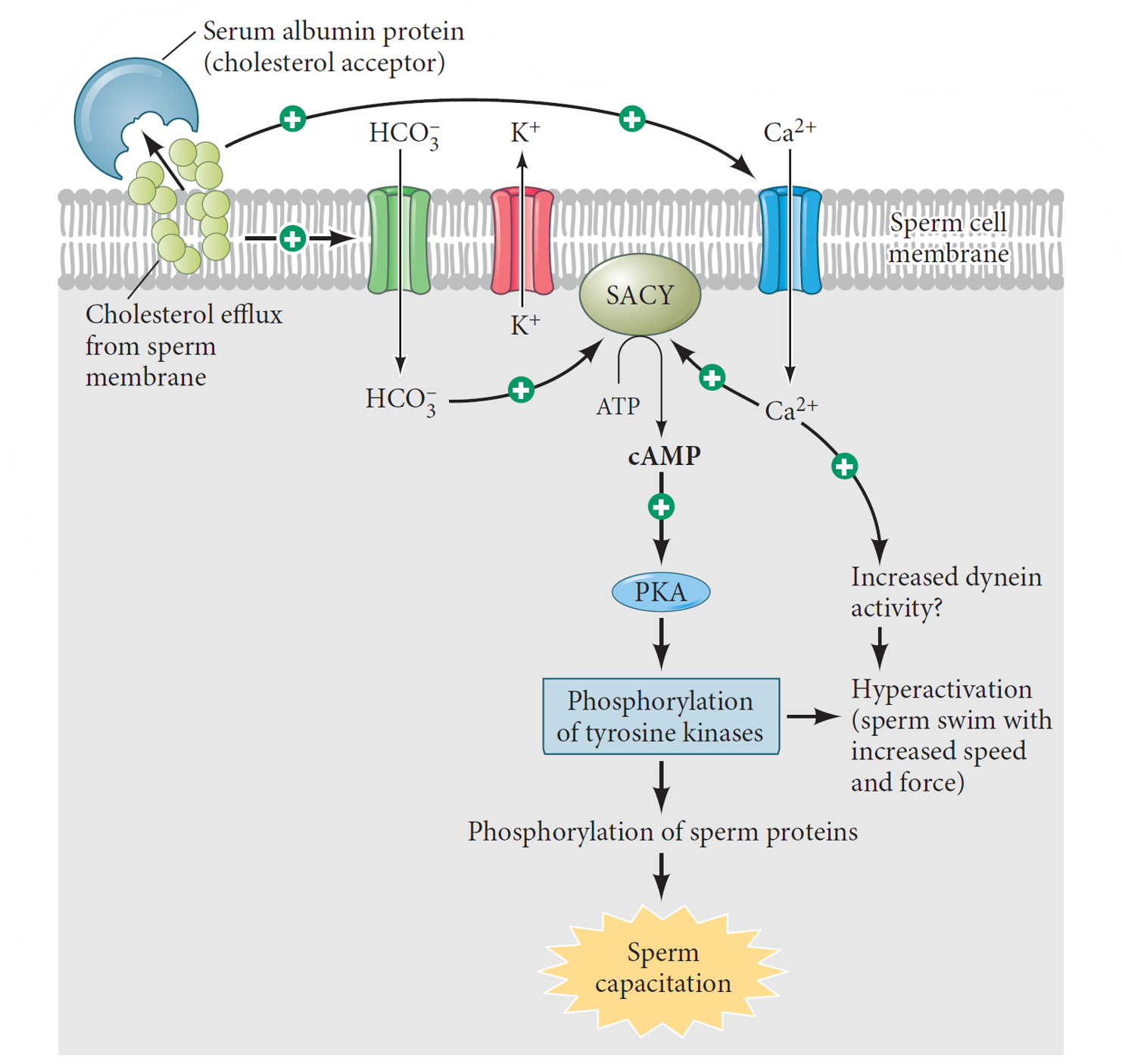Table of Contents
Introduction to capacitation
- Capacitation is a critical process that prepares mammalian sperm for successful fertilization.
- Unlike frogs or sea urchins, newly ejaculated mammalian sperm are immature and cannot fertilize the egg immediately.
- Capacitation occurs during the sperm’s journey from the vagina to the oviduct, allowing it to gain the necessary competence for fertilization.
Key Concepts
1. Purpose of Capacitation
- Capacitation ensures that sperm acquire the ability to undergo the acrosome reaction and sense cues guiding them to the egg.
- It occurs after sperm reside in the female reproductive tract for some time.
2. Cumulus Matrix Interaction
- Uncapacitated sperm are “held up” in the cumulus matrix surrounding the egg.
- Capacitated sperm can move beyond this barrier and reach the egg.
3. Timing and Competence
- Human pregnancies result from intercourse during a 6-day period ending on the day of ovulation.
- Speedy sperm may not succeed if they haven’t undergone capacitation.
4. Molecular Changes in Capacitation
- Lipid Changes:
- Cholesterol removal alters the sperm cell membrane.
- Lipid rafts (regions with receptor proteins) shift to the anterior sperm head.
- Outer acrosomal membrane changes prepare for the acrosome reaction.
- Protein Changes:
- Specific proteins or carbohydrates on the sperm surface are lost during capacitation.
- These compounds may block recognition sites for zona pellucida binding.
- Membrane potential becomes more negative, allowing calcium channels to open.
- Calcium and bicarbonate ions activate cAMP production and facilitate membrane fusion.
- Protein phosphorylation occurs, and some proteins migrate to the sperm head surface (e.g., Izumo for sperm-egg fusion).
5. Connection to Sperm Translocation
- Uncapacitated sperm actively bind to oviduct cell membranes in the isthmus before entering the ampulla.
- This binding is temporary and breaks when sperm become capacitated.
- Extending sperm life span and restricting entry into the ampulla may prevent polyspermy and maximize the chance of meeting the egg.

Conclusion
Capacitation transforms immature sperm into competent fertilizers, ensuring their readiness for the critical encounter with the egg in the oviduct.
